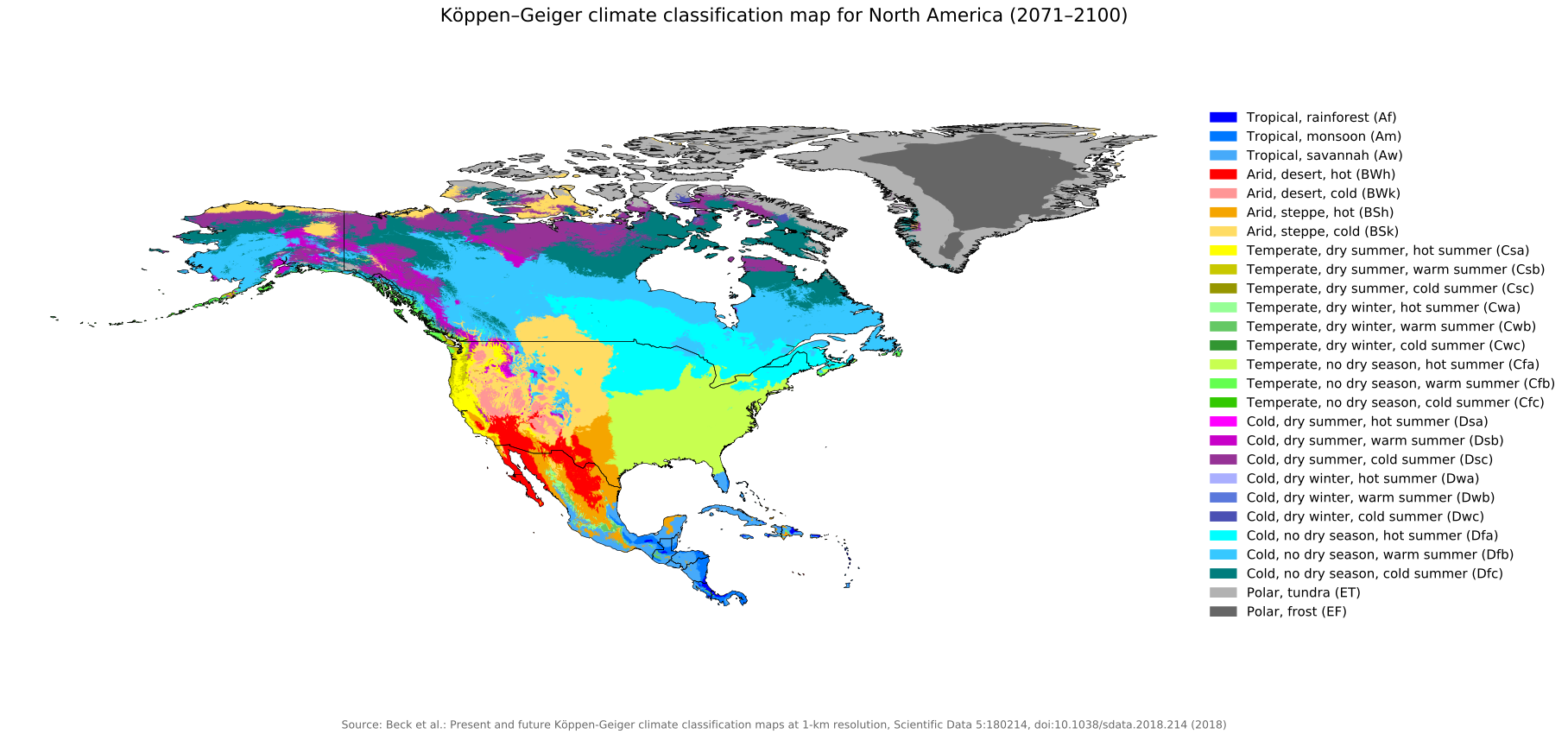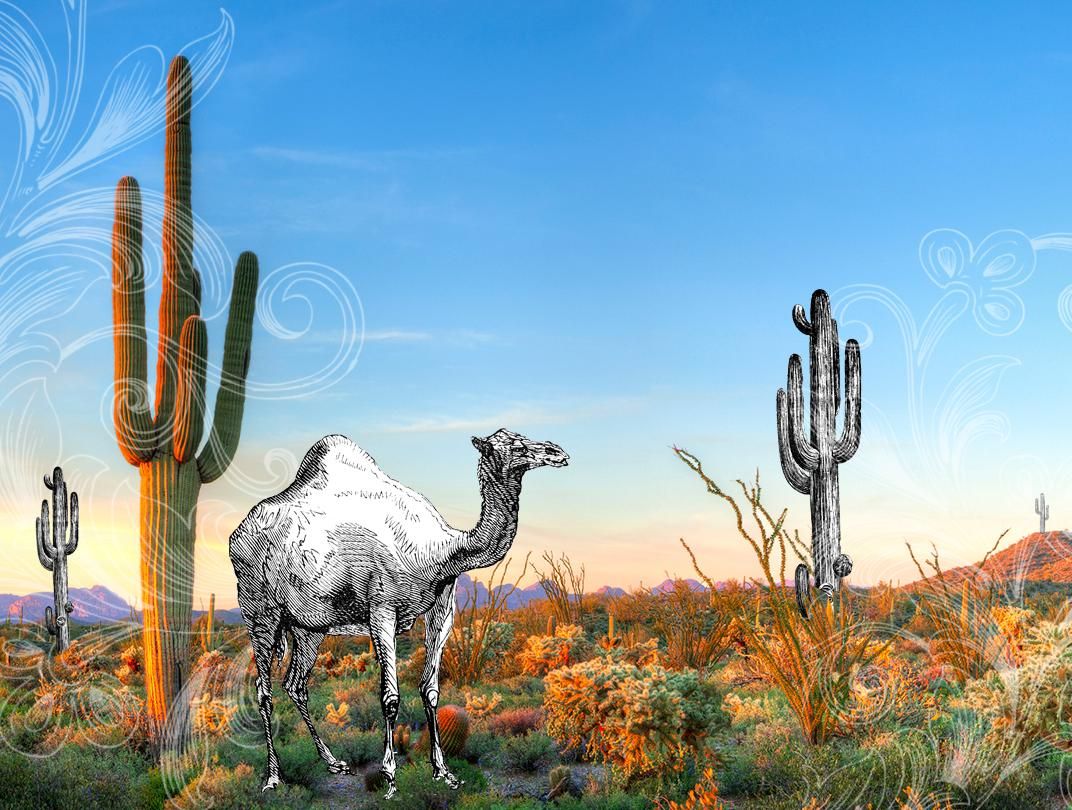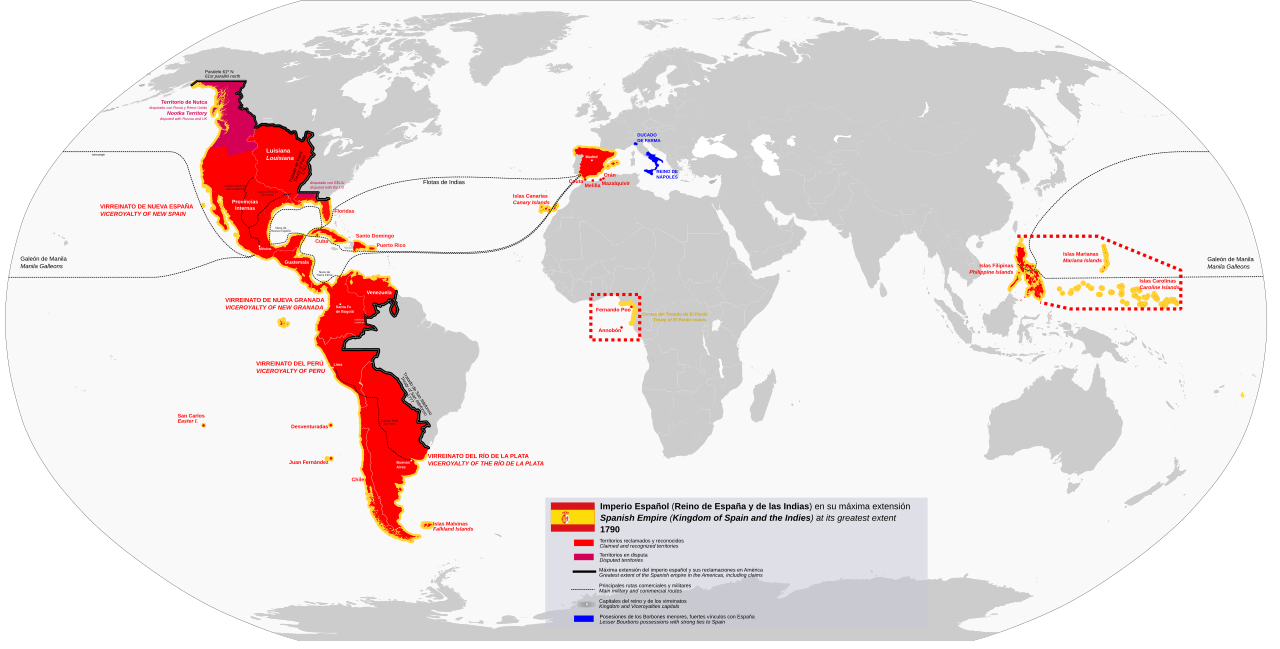So IOTL in 1850 there were just around 10,000 Californios in 1845 according to wikipedia. There were also around 3,000 residents of Los Angeles in the same time. I'm no expert but it seems to me that these numbers could be considerably higer due to California's sheer size. IOTL the first settlers arrive in California in 1774 from Mexico. Could that be pushed forward significantly earlier to maybe even the 17th century? A few hundred settlers arriving around 1670 would make a world of difference.
A gold rush may not even have to happen in this time. Here's a fairly quick series of events I could see happening:
Camels are introduced to Mexico around 1580 by Spain, either by Spanish merchants or the crown itself. They quickly find use for these products, particularly in connecting the northern provinces to Mexico City. Texas, California and New Mexico however see hardly any new settlement immediately.
In 1665, a group of 200 men takes camels and move into California, founding a military post in San Diego. Monterrey can be founded around 1690 as the capital of Alta California, and be settled by a few hundred families from Sonora in Mexico. They can rapidly be granted their own ranches to make a profitable business for themselves and expand California's economy. Over the early 1700s this leads to the slow movement of several thousand Mexicans and Spaniards into California. They establish their own society and customs, largely based around a ranching culture and their Spanish language. Spanish settlement further north is limited, but is does occur in the more fertile agricultural lands up there.
By 1750, Californios number around 20,000 people focused in southern California. However in 1770, these Californios discover gold in the region, causing a gold rush in California. These new arrivals number in the tens of thousands, and are extremely diverse in origin, coming mostly from Mexico, Spain, British North America and the Philippines. Between 1770 and 1775, approximately 90,000 people arrive in California for the gold. Their origins are:
Mexico, 36,000 40%
Spain, 27,000 30%
East Asia, 9,000 10%
BNA, 9,000 10%
Other, 9,000 10%
These new arrivals clash with the local natives, but disease and new technology means the tribes suffer significantly in this period as the Californios gain a monopoly over the golf there. As mentioned above around 40% of new arrivals would be European, while there would also be a significant minority of arrivals from East Asia and of course Mexicans of mixed ancestry. This would help create a multiracial California as found across Latin America.
This new revenue also allows for California to expand their borders, establishing San Francisco and San Hose further to the north as large towns, which would expand into towns of several thousand in their own right over the 1700s. The California Valley would also expand in terms of agriculture as many gold prospectors would settle down as farmers in time. It would be in the late 19th century that the California trail would be established which would herald the rapid influx of Americans into California.
California's growth would continue so that by 1820 there would be hundreds of thousands of people living there, and continued growth year on year. This would ensure that when Mexico would declare independence in 1825, California would quickly follow with their own declaration the following year. This independence would be cemented by the Mexican-Californian War (1827) which would finalise the borders between the two states. By this time California would be on a much better footing than Mexico, having a much smoother transition to independence. The first Californian government would also play a key role in modernising the state, largely in breaking down the Catholic Church's monopoly on land by bringing it into public hands and distributing it by lottery.
However in the 1820s democracy would not immediately be established, but there would be a strong democratic movement in California. Firstly there would be a larger middle class due to the gold rush and ranch owners, as well as a strong merchant class in San Francisco and Los Angeles, who primarily traded on camels with Mexico to the south, or even shipped goods to Asia. This middle class, alongside the Anglophone population who would have a tradition of democracy and republicanism, would result in the creation of Californian democracy in 1828. However this would come with a major caveat: a European monarch would be placed at the head of a constitutional monarchy in California to appease conservative factions in the new country. And so in 1929 the Kingdom of California would be established, with Prince Giuseppe of Savoy becoming the first monarch. IOTL he died aged 36 in 1802, ITTL he would be live and in 1829, aged 63 he would assume the title of King of California, with his name being changed to King Jose of Savoy.
The period of 1829 to 1840 would be a booming time for California. Democracy would be established with all landowning males being allowed to vote, while also the government would fund settlement of the land further north, and also encourage immigration from Europe. Land reform would allow for land to be distributed by lottery to Californian citizens from the Catholic Church, severely diminishing their power. Furthermore the 1820s would also see the arrival of 3,000 Spaniards expelled from Mexico who would bring with them wealth and education. The reforms of this period would also include universal education to all children under the age of 14, which would partially be seen as a method of integrating the arrival of non Spanish, particularity Americans, into society.
By 1840 however, it would also be apparent that Americans interest in gaining access to the Pacific would also contradict with Californian independence. However due to California's large population and economy they would also have a lot of negotating power. The Anglo-American-Californian agreement of 1846 with the Oregon Treaty granted the US all of the Oregon territory in exchange for what we today recognise as Nevada and Arizona. As these were largely deserts as compared to the fertile lands of Oregon and Washington, this was accepted by the US. Interestingly in Oregon there would be an indigenous Hispanic population similar to the Tejanos and the Californios of OTL. After 1846 many would move back to California, while others would remain in Oregon and became a minority there.
In response to the 'American threat' however, California would also declare themselves The Empire of California in 1851. In reality not much would change, although the borders of the USA and the Empire of California would soon look like this:
View attachment 533076
The period between 1850 and 1880 would see limited mechanisation and advancement. In general agriculture would lag behind Western Europe as ranching, especially in the south, would dominate and be the main focus of exports. In the north however, the more temperate climate would lead to more European style agriculture, enabled by the movement of Irish, German and American farmers into the region during the 1840s and 1850s. The Salinas Valley in this world would be founded by European immigrants and quickly become very productive.
As a general rule however, this period would see California fall behind the US and Western Europe. Similar to most of Latin America, their economy would be based around exports, of gold and agricultural produce mostly. However political stability would help make them relatively prosperous.
It would also be in the period of 1840 to 1880 that Californian culture would become cemented as distinct from Mexican culture. This would be helped in no small part by camels. Similar to northern Mexico, use of camel furs and other products would make them distinct from Iberia. Also Californios music would take on it's own distinctive flavour, and several dishes from East Asia, particularly surrounding rice, would enter Californian culture dating back from the gold rush. Architecture would develop, heavily influenced by Spanish colonial buildings, would thrive as California would come into it's own culturally in this period.
The period of 1880 to 1930 would also prove defining for California as it would develop into a modern state and avoid the trap of most of Latin America. The 1880s would see industry emerge, centred around San Francisco, San Jose and Sacramento. This industry would be 'light industry' however, similar to Argentina, with it mostly being concerned with the management of food for shipment to Western Europe and Asia to a lesser extent. Even so, combined with the opening of the Panama Canal, this would allow for millions of Europeans to arrive in California in this period. Primarily these would be Italians, Spaniards, Germans and Portuguese immigrants. However one of the largest groups would still be Americans arriving from the Eastern US. This population explosion would allow for California to reach a population of 6.8 million by 1900, of whom 35% would be immigrants. In San Francisco, Sacramento and San Jose, the majority of people would be immigrants.
Agriculture in this period would boom as irrigation would become much more intensive and widespread, allowing for crops to have enough water year round. Railways would connect California to the American cities of Portland and Seattle up north, which would be much larger than IOTL. Railways would be built across California too in this period as modernisation would occur. The period of 1880 to 1930 would also see major political reform. Women with property would be allowed to vote in 1881, but quickly unions and working class political parties would call for greater reform and transparency. In 1887 the Australian Ballot (or the secret ballot) system would be introduced which would allow for greater transparency in elections. Socialist parties would find great success in key urban areas, and so workers rights to sick leave and holidays would be expanded in this time. By 1890 the majority of people would have the right to vote.
Heavy industry would be slower to develop, but would come along sooner or later. Iron ore would mainly be mined in the Richmond Mine in northern California, and soon enough steel processing plants would be opened in Sacramento. Coal however would have to be mined in Nevada, which would fortunately have enormous reserves. The Black Mesa and Pinedale reserves would quickly be mined for coal, which would be sent by railway to power the industrial heartlands of California. However the coal mines would allow for many thousands of immigrants from Europe to enter Arizona, to help expand California's control over the territory. Miner's unions there, due to their importance to the country's energy supply, would also prove a pivotal role in expanding democracy to the workers.
Anyway by 1914 California would be growing rapidly, and at first the war would allow for a growing economy as Europe would require immense amounts of food and resources, and have the money to pay for it. Come 1918, California would also prove to be a key destination for those escaping postwar poverty in Europe, and over the 1920s would generally do well, although low agricultural prices would mean an economic depression and civil unrest in parts of the country. However a strong democratic tradition would also allow for California to do well over the 1930s as opposed to much of Latin America who would have fallen into chaos and authoritarianism. The Great Depression however, would hit California and would cause significant unrest, but democracy would remain in tact.
California would play a relatively minor role in the second world war, however by 1945 they would have recovered from the depression to once again become a major recipient of immigrants: this time from eastern europe largely, while Italy and Spain would continue to be large sources of immigration. The 1940s for California would mean repition of several trends seen in OTL USA. Mostly, suburbanisation would see wealth move from the city centre to the suburbs. A comprehensive welfare state would be created, combined with higher taxation and universal healthcare to create a social democracy. Immigration would generally be much lower in the 1950s as compared to the 1910s due to the prosperity of Europe, and as the suburbs would grow the Little Italys, Little Ukraines and Little Americas of California would fade away as intergration would speed up.
Also, the growth of air conditioning and newer agricultural methods would allow southern California, Nevada and Arizona to thrive. Pheonix and Tuscon would become notable cities, as would Las Vegas, Los Angeles and San Diego, which would all expand into cities of hundreds of thousands of people.
The period of 1960 to 2020 would see California continue to grow to outpace it's neighbours. By 1960, large scale immigration from Latin America would have picked up. Around 200,000 Cubans would arrive in California during the Cuban Exile of this period. Meanwhile economic migrants from Mexico would by 1960 be the largest group arriving in California.
By 1960 California's population would be 22.5 million, and they would be seeing strong growth. Birthrates would generally be high for the developed world, but they would highest in rural Nevada and Arizona, where families of 6, 7 or 8 children would be common in compliance with strict Catholic teachings. Interestingly Mennonite colonies in Nevada would also prove to be a large source of population growth as by the 1960s they would be doubling every 25 years, and have a population in tens of thousands.
The period of 1960 to 2020 would also be defined by the movement of millions of Latinos into California who would hugely shape the country. Strong growth would mean that by 1990 their population would be 38 million, and by 2020 they would reach 60 million people. With a GDP per capita of $50,000, their economy would have a GDP of $3.3 trillion, making them the world's 5th largest economy, ahead of the UK, France and all of India. With strong yearly growth of around 1.7% per year, they would be projected to reach 100 million people by 2050. Furthermore, Sacramento in this time would have 15 million people, with San Francisco, San Diego, San Jose and Los Angeles would all have between 3 million and 5 million people and be major cities in their own right. Sacramento would be the largest Spanish speaking city on Earth, and be California's capital. Due to most growth occurring in cities, a city such as Los Angeles, which would have 5 million people in 2020, is projected to grow to 9 million people by 2050. This growth would help ensure California's dominant position in Latin America and on the world stage.










